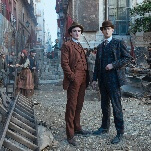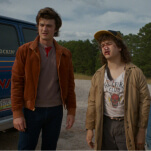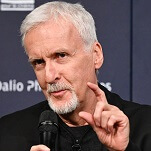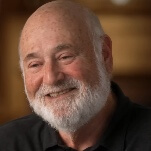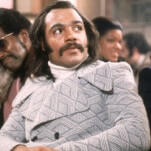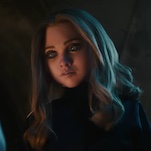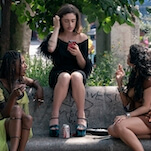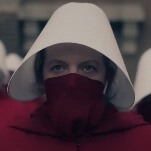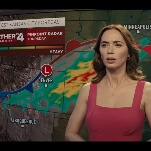We open in a grimy, fluorescent-lit military base somewhere in rural England, where the girl from the poster, Melanie (Sennia Nanua), is the star student in a class full of children who are wheeled into school—or at least, the nondescript concrete room that serves as a school—with their arms, legs, and foreheads bound to their wheelchairs by leather straps. The movie revels in the mystery of its initial image, as sympathetic schoolteacher Helen (Gemma Arterton) tells the children the story of Pandora’s box, and cruel, unemotional scientist Dr. Caldwell (Glenn Close) tests Melanie’s resolve by asking her to pick which of her classmates won’t be showing up to school the next morning—or ever again.
The zombies first show up 20 minutes in, after Melanie volunteers herself as the next child to mysteriously disappear in the middle of the night. That’s when we learn that Melanie and her classmates are all “hungries,” or people infected with a toxic fungus that turns them into mindless flesh-eating animals. (The grown-ups are fast 28 Days Later-style zombies, it should be noted, not slow George Romero-style ones.) However, since they were infected in the womb, these second-generation zombies are special. They retain their intelligence and emotional capacity, sensitive and clever Melanie most of all. And Dr. Caldwell believes that their intelligence contains the key to developing a vaccine for the fungus, justifying—at least in her mind—the human experimentation.
Once this initial premise is revealed and The Girl With All The Gifts leaves the base, however, this intriguing twist on zombie lore becomes subsumed by postapocalyptic road-trip cliché. The majority of the action revolves around Helen, Melanie, and Dr. Caldwell journeying through a dystopian London long since reclaimed by nature, escorted by gruff Sgt. Eddie Parks (Paddy Considine) and his men. The zombie scenes are reminiscent of what you might see on a show like The Walking Dead, short bursts of extreme violence and gore punctuating expository dialogue scenes where the survivors try to figure out how they’re going to get from point A to point B. Here, Melanie once again provides an interesting variation on the formula, serving as a scout and ambassador between worlds. Don‘t expect anything new from her human counterparts, though, just the usual shooting and running and hiding slowly festering flesh wounds.
You have to give director Colm McCarthy, a Scottish TV veteran making his feature film debut, and writer Mike Carey, adapting his own novel, credit for attempting the seemingly impossible task of doing something new with the zombie subgenre. And by blending it with the common YA trope of a young female protagonist who leads the world into a new revolutionary era, they almost get there—largely thanks to newcomer Nanua, who presents her character’s grappling with complex themes of identity and original sin with a childlike guilelessness. The rest of the main cast plays their parts well—Close the cagey moral relativist, Arterton the passionate bleeding heart—but the real draw here is the young people. Who, probably not coincidentally, are the ones who will enjoy The Girl With All The Gifts the most.







